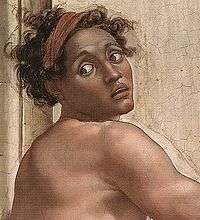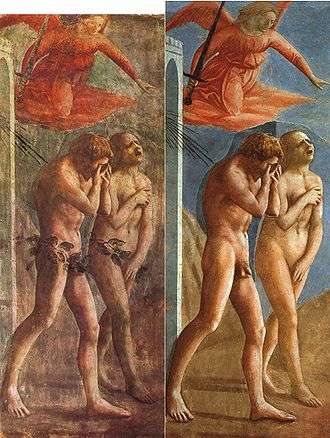Giornata

Giornata is an art term, originating from an Italian word which means "a day's work." The term is used in Buon fresco mural painting and describes how much painting can be done in a single day of painting. Knowing how much can be painted in a day is crucial in the Buon fresco technique, because in this technique a watercolor paint, without binder, is applied to wet lime plaster which binds the paint into the surface of the plaster when it dries, making for an extremely durable painting. An experienced fresco painter knows how much surface can be painted in a day, and wet plaster is applied to the wall in the right amount needed for each day's work.[1] That amount is the giornata. Generally the plaster is applied in a way that will conform to the outline of a figure, or object, in a painting, so that the daily segments will not show, but it is occasionally visible as different sections in a work where the artist may not have been able to replicate a pigment exactly the next day, or where restoration has altered or made apparent the changes in pigment between the sections.
Notable examples giornate

Masaccio's Expulsion from Eden - It is clearly visible that the figures of Adam and Eve were painted separately from the rest of the image, and indeed that the two figures themselves were painted separately from each other.
_adj.jpg)
Giotto's Frescoes in Arena Chapel - It is clearly visible particularly in the Lamentation panel. The sky is broken up into several pieces and there are faint lines of demarcation visible around several of the figures.
Notes
- ↑ Fresco Cartoon - Directions fresco-techniques.com